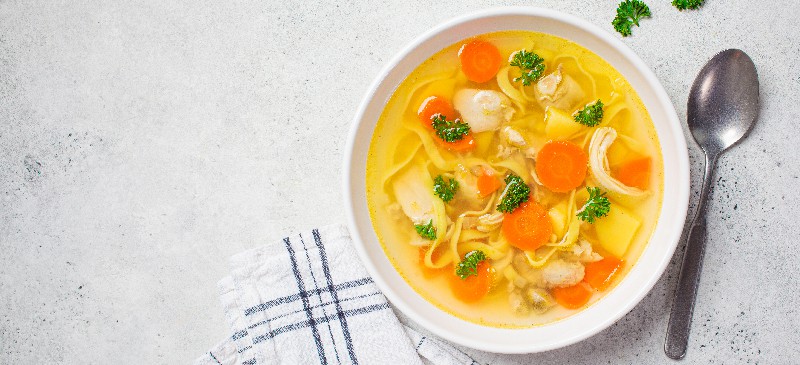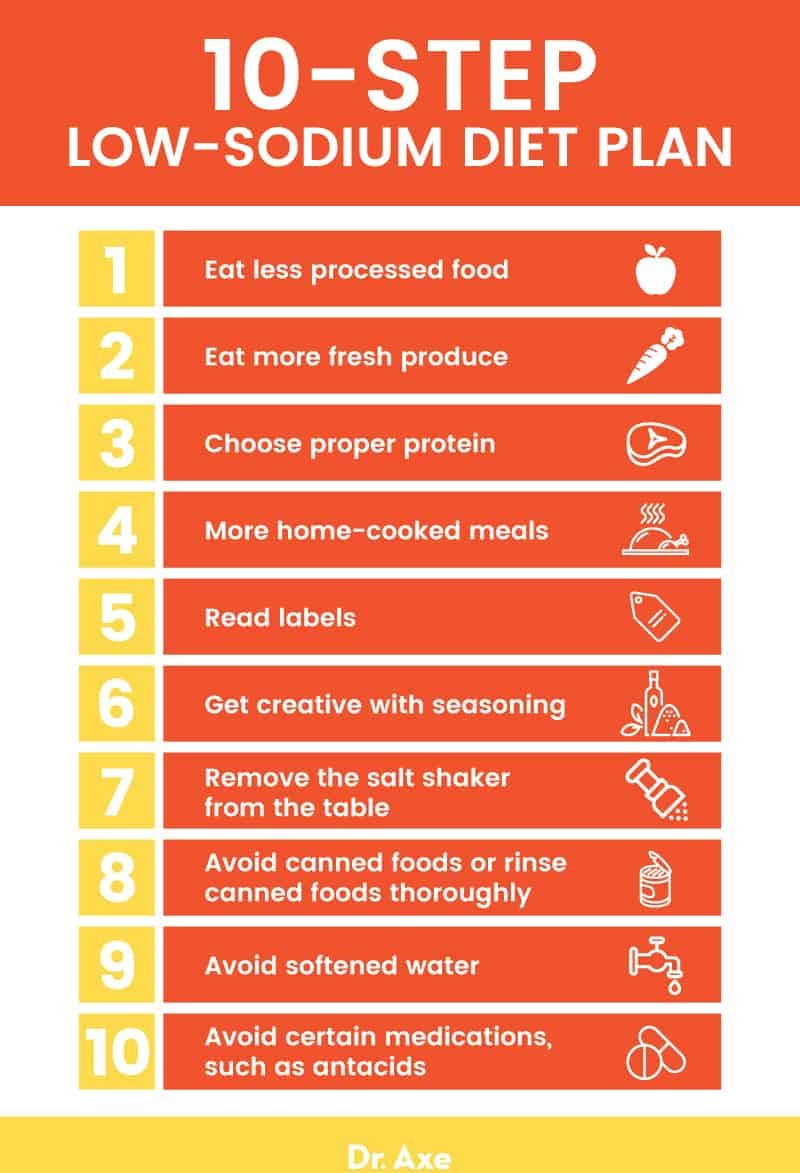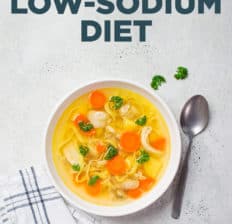This Dr. Axe content is medically reviewed or fact checked to ensure factually accurate information.
With strict editorial sourcing guidelines, we only link to academic research institutions, reputable media sites and, when research is available, medically peer-reviewed studies. Note that the numbers in parentheses (1, 2, etc.) are clickable links to these studies.
The information in our articles is NOT intended to replace a one-on-one relationship with a qualified health care professional and is not intended as medical advice.
This article is based on scientific evidence, written by experts and fact checked by our trained editorial staff. Note that the numbers in parentheses (1, 2, etc.) are clickable links to medically peer-reviewed studies.
Our team includes licensed nutritionists and dietitians, certified health education specialists, as well as certified strength and conditioning specialists, personal trainers and corrective exercise specialists. Our team aims to be not only thorough with its research, but also objective and unbiased.
The information in our articles is NOT intended to replace a one-on-one relationship with a qualified health care professional and is not intended as medical advice.
How to Follow a Low-Sodium Diet Plan
February 27, 2023

According to the Centers for Disease Control and Prevention (CDC), Americans get 71 percent of their daily sodium from processed and restaurant foods, and only a small amount of the sodium we consume each day comes from our salt shakers. Sodium is essential to our bodies functioning properly, and it’s one of the nutrients we need so we don’t end up with an electrolyte imbalance. The problem is that many people consume way too much sodium on a daily basis, filling up on unhealthy sodium-rich foods, which is why a low-sodium diet may be the right way to go.
Sodium can naturally be found in some healthy foods, but processed foods and the meals people eat when they go out (especially fast food) are known for being overloaded with added salt. If your sodium levels are too high, first and foremost, cut out those unhealthy processed foods — and if you want to get your sodium levels back on track, a low-sodium diet may be your best bet.
Are you interested in following a low-sodium diet? If so, it’s important to know high-sodium foods vs. low-sodium foods. If you’re just looking to reduce your sodium intake, read on for some of the easiest and healthiest ways to do just that.
What Is a Low-Sodium Diet?
A low-sodium diet restricts the intake of sodium that can be found in salt and other sodium-rich foods.
How does it compare to low-carb diet and low-sugar diet?
A low-carb diet restricts the intake of carbohydrates, especially high-carb foods like bread and pasta. A low-sugar diet typically limits the intake of added sugars while a sugar-free diet is one that typically stays away from all sources of added sugar as well as hidden sugar foods. A sugar-free diet plan sometimes even encourages a reduction in high-carb foods (like fruits and grains) that can still be healthy but do contain natural sugars.
People with high blood pressure or heart failure are some of the people who are most commonly asked by their doctors to limit their daily salt intake. The best and healthiest way to do this is to eat a well-balanced diet that is focused on fresh, whole foods. (You can also try a three-day cardiac diet.)
Fresh fruit and vegetables are naturally low in salts while processed foods, canned foods and fast food are some of the worst offenders that should be avoided.
How many grams of sodium per day is typically OK? According to the CDC:
- The 2020–2025 Dietary Guidelines for Americans recommend that Americans consume less than 2,300 milligrams (mg) of sodium each day as part of a healthy eating pattern.
- About 90% of Americans 2 years old or older consume too much sodium.
- The average daily sodium intake for Americans 2 years old or older is more than 3,400 mg.
Is salt bad for you? The short answer: No, it’s not bad for you in the right amounts and in the right form.
Heavily processed table salt, processed foods and fast foods are the top things to avoid as much as possible. Salt contains sodium, and for this reason it often gets a very bad rap, but the truth is that we absolutely need sodium to be healthy — so while some people may benefit from a low-sodium diet, it’s important to go about it in a healthy way.
Sodium helps maintain blood and fluid balance, it’s needed for muscle contractions, and it also helps with nerve signaling. Put simply, sodium is an element that the body needs to work properly.
When it comes to addressing high blood pressure, the focus is typically on reducing salt, but it’s crucial to know that our bodies need a healthy balance of both sodium and potassium. Research has demonstrated that when it comes to high blood pressure, increasing potassium intake and weight loss for people who are overweight are both key.
Best Low-Sodium Foods
This nutrient-dense foods list has a lot of great low-sodium foods to choose from each day. Here are some more ideas for foods naturally low in sodium:
- Fresh or frozen fruit
- Fresh or frozen vegetables
- Dried fruit
- Fresh or frozen beef, lamb, poultry and fish
- Eggs
- Olive oil
- Coconut oil
- Unsalted seeds, including sunflower, flax and chia seeds
- Low-sodium cheese, such as Wensleydale, Emmental, mozzarella, cream cheese and cottage cheese
- Unsalted air-popped popcorn
- Dried peas and beans
- Yogurt
- Homemade soups with little or no added salt
As you can see, there are many things on this list that are perfect low-sodium snacks.
Many people wonder about the sodium in eggs. One egg contains around 70 milligrams of sodium. It’s not zero, but it’s pretty low.
It’s surprising yet true that bread can be an unexpected source of sodium, which is why you will likely see a low-sodium bread option at your local grocery store. If you’re looking to consume more low-sodium foods, then sticking with fresh, whole foods is a generally helpful guideline.
When using salt, it’s best to completely avoiding processed table salt and opt for a more natural salt, such as pink Himalayan sea salt or Celtic sea salt. True, high-quality pink Himalayan salt is one of the purest salts you can purchase and is very different from table salt, which is very heavily processed, eliminating its other minerals.
Worst Foods High in Sodium
There are actually foods that don’t taste salty but may still be high in sodium. There are also many foods that taste extremely salty because they are overloaded with added sodium.
A report by the CDC in 2010 called out five foods that give Americans most of their sodium: yeast breads, chicken and mixed chicken dinners, pizza, pasta dishes, and cold cuts.
The most common form of sodium is sodium chloride, or table salt. Sodium is also naturally found in many healthy foods. For example, milk, celery and beets all naturally contain sodium.
Drinking water also typically contains sodium, but the amount depends upon the water source. Softened water has sodium added to it.
If you’re watching your sodium daily intake, it’s helpful to know the top offenders when it comes to some of the highest-sodium foods:
- Fast food
- Processed meats, including cold cuts, bacon, hot dogs, sausage, bologna, ham and salami
- Bacon fat or salt pork
- Shortening and lard
- Garlic salt or seasoned salts
- Bouillon cubes
- Canned anchovies
- Olives and pickles
- Soy, teriyaki and Worcestershire sauces
- Processed cheese
- Canned or instant gravy mixes
- Canned soups
- Bottled salad dressings and salad dressing mixes
- Meat tenderizers and marinades
- Many snack foods, such as chips and crackers
- Sodium preservatives or flavorings, such as monosodium glutamate (MSG)
- Barbecue and steak sauces
The Low-Sodium Diet Plan
If you’re someone who could benefit from a sodium detox of sorts, here are some healthy ways to cut down on your sodium intake and follow a low-sodium diet:
- Eat less processed food: This is by far one of the best ways to reduce unhealthy sodium intake.
- Eat more fresh produce: Make fresh and frozen fruits and vegetables staples in your diet to avoid added salt and up your intake of vital nutrients.
- Choose proper protein: Whether you’re on a low-sodium diet or not, getting your protein from fresh meat and fish is highly preferable to processed versions of these proteins that are known to be overloaded with added sodium.
- More home-cooked meals: If you or someone else in your household does the cooking, you have a lot more control over the ingredients going into your meals compared to eating out or eating premade meals.
- Read labels: Being a careful label reader is another top way to avoid high-sodium foods and reduce sodium daily intake. In addition to sodium or salt, also look for other sodium sources, including MSG, baking soda or sodium bicarbonate, baking powder disodium phosphate, sodium alginate, sodium citrate, or sodium nitrite.
- Get creative: Remember that salt isn’t the only way to season your foods. Adding antioxidant-rich herbs and spices, such as garlic, pepper, fresh lemon juice and apple cider vinegar, is a healthy way to up the flavor content of your foods without adding additional sodium.
- Salt shaker location: If you are really struggling with consuming too much sodium, it’s a good idea not to keep the salt shaker front and center where you eat your meals.
- Careful with canned foods: Canned beans and vegetables are typically loaded with added salt so if you must use canned goods (rather than fresh, frozen or dried) make sure to rinse the contents of the can well to get rid of as much sodium as you can.
- Avoid softened water: Refrain from using softened water for cooking and drinking since it contains added sodium.
- Avoid certain medications: It may be surprising, but people on a low-salt diet also need to watch out for surprising sources of sodium, such as antacids.
If you’re looking for low-sodium recipes, keep your eye out for ones that include whole-food ingredients naturally low in sodium, and if salt is included, don’t worry because you’re in control of just how much salt goes into the recipe.
Here are some of my favorite low-sodium diet recipes:
- Strawberry Spinach Salad with Poppy Seed Dressing Recipe
- Greek Chicken Souvlaki Recipe
- Eggplant Rollatini Recipe

Related: Nanotechnology in Food Science: What You Need to Know
Risks and Side Effects
Even though you should be thoughtful about the sodium in food and your intake of sodium per day, you should also be aware of the dangers of a low-sodium diet, no-salt diet or salt-free diet. Some studies have linked over-restricting salt to an increase in insulin resistance, LDL “bad” cholesterol and triglyceride levels, among other significant health concerns. A few studies have even found that a low-sodium diet may be bad for the heart.
Common signs of low blood sodium or hyponatremia include nausea and vomiting, headache, confusion, loss of energy and fatigue, restlessness and irritability, muscle weakness, spasms or cramps, seizures, and coma.
The Cleveland Clinic advises not use a salt substitute unless you first check with your doctor or dietitian due to potential drug and/or nutrient interactions.
Some salt substitutes or low-sodium salts may contain a mixture of table salt and other compounds, such as potassium chloride. With these products, it can be easy to overdo it and end up getting too much sodium.
Even though potassium helps balance sodium, getting too much potassium can be a bad thing if you have kidney issues or if you take medications for high blood pressure or congestive heart failure that cause potassium retention in the body.
Final Thoughts
- Sodium is essential to the body in small amounts, but many people today get too much sodium in their diets from processed foods and eating out. A low-sodium diet done right can help.
- When using salt, stay away from processed table salt, and opt for a true, high-quality sea salt.
- Foods low in sodium include things like fresh or frozen fruit, vegetables, meat, and fish.
- Other healthy low-salt foods for a low-sodium diet include eggs, olive oil, coconut oil, homemade meals, soups and stews (you’re in control of the salt content!), as well as unsalted nuts, seeds and beans.
- Cooking at home is an easy way to control the salt content and other ingredients in your food whether you’re on a low-sodium diet or just aiming to eat healthier.
- In addition to sea salt, healthy additions to recipes like garlic, herbs, spices and apple cider vinegar are easy ways to up the flavor content of a meal without increasing the sodium content.
- Be a careful label reader to avoid products with high levels of added processed salt.
- Research points toward serious health dangers of restricting salt too much so be careful not to limit your intake too much.





